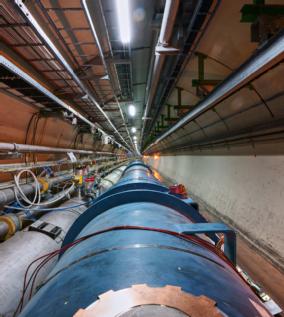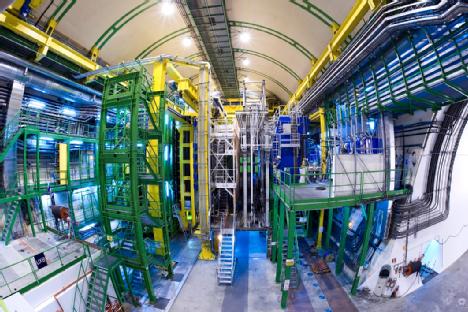Dr Tom Blake, Royal Society Research Fellowship
Probing Physics Beyond the Standard Model with Rare B-Hadron Decays
The Standard Model of particle physics is our best understanding of how particles interact on a subatomic level. It describes three of the four known fundamental forces in the universe, and classifies all known elementary particles.
Four fundamental forces are known to exist: the gravitational and electromagnetic forces (the effect of which can be observed in everyday life), and the strong and weak forces, which produce forces at subatomic distances and govern nuclear interactions.
The LHCb experiment
The Standard Model has been phenomenally successful at describing the wealth of measurements that have been carried out since it was introduced in the 1970s.
However, we also know that the model cannot be complete since it does not explain dark matter or why we live in a matter-dominated Universe. Dark matter is a form of matter thought to account for around 85% of matter in our Universe. Its presence can be detected through astrophysical observations, including gravitational effects that can’t be explained by current theories of gravity. Dark matter does not interact with the electromagnetic field either, which means it does not absorb, reflect or produce electromagnetic radiation.
The LHCb experiment at the Large Hadron Collider (the world's largest and most powerful particle accelerator) is designed to make precise measurements of the decays of b-hadrons, subatomic particles that don't exist naturally.
The b-hadrons are highly unstable and typically travel about 1cm before decaying into lighter, more stable, particles in our detector.

The tunnel at the Large Hadron Collider (LHC) - the world's largest and most powerful particle accelerator. Image credit: CERN.
By studying rare decays of these b-hadrons, it is possible to make precise tests of the Standard Model. If there are new particles or forces to be discovered, we should be able to see their influence in the way Standard Model particles are produced or decay. This could help unravel mysteries of yet unknown physics, including the nature of dark matter.

The LHCb detector at the Larger Hadron Collider. While the particles studied are on a subatomic scale, a large experiment is needed to measure their properties precisely. Image credit: CERN.
Studying rare decays at the Large Hadron Collider
With the aid of a Royal Society University Research Fellowship, Dr Tom Blake from the Department of Physics is leading the development of a programme of measurements at the Large Hadron Collider to test the Standard Model of particle physics using rare b-hadron decays.
The measurements performed so far show an interesting pattern of tensions that will need to be understood when data taking restarts at the Large Hadron Collider in 2022.
